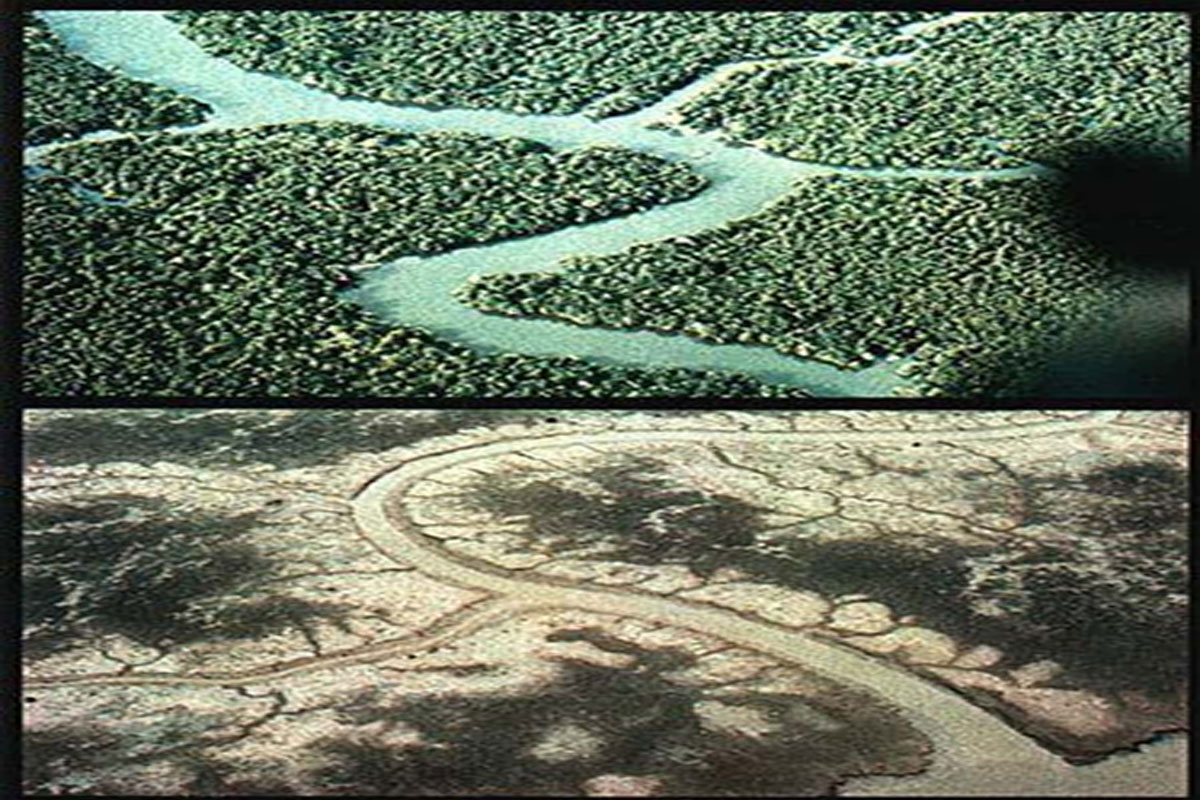
What Happened To People Who Came Into Contact With Agent Orange During The Vietnam War?
Melissa Sartore
The staggering death toll from the Vietnam War continues to rise – not from combat, since the war technically ended in 1975, but from the side effects of Agent Orange. Agent Orange was one of several toxic herbicides used by the US government during the Vietnam War to clear Southeast Asian jungles of foliage cover, but its chemical composition has had long-term consequences.
War veterans, Vietnamese citizens, and descendants from all involved parties continue to suffer from deadly health conditions and deformities as a result of poison exposure, and both the landscape and the food chain have yet to recover from the long-lasting residuals of leaching toxins. Agent Orange was a military tactic, but it has proven to be more of a backfiring torture method than anything else.
In 1976, the UN’s Environmental Modification Convention banned “any technique for changing the composition of structure of the Earth’s biota,” which meant they strictly forbade herbicidal warfare. Even so, both the US and Vietnamese governments have been slow to acknowledge the Agent Orange problem or offer reparations for the widespread damage caused by their herbicidal strategy, despite reports that millions of people continue to be affected.
But slowly, through scientific studies and activism championed by veterans and their descendants, the governments have begun working to create policies for both health care and environmental cleanup. Agent Orange is gone, but it is still very much alive for many unfortunate victims.
________________________________________
• Photo: Unknown / Wikimedia Commons / Public Domain
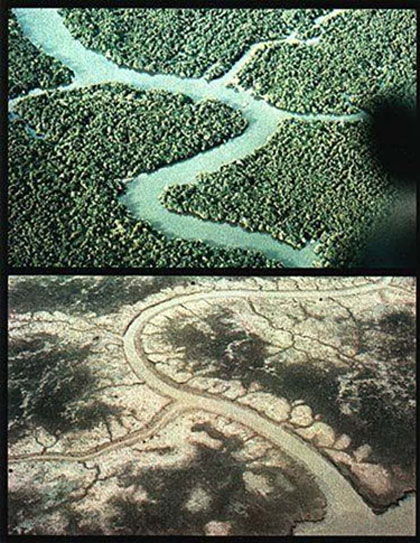 Agent Orange Was Part Of A Larger Plan To Destroy The Southeast Asian Jungle
Agent Orange Was Part Of A Larger Plan To Destroy The Southeast Asian Jungle
Through operations nicknamed Ranch Hand and Trail Dust, the US military released Agent Orange over the Vietnamese jungles to prevent Viet Cong militants from taking cover in the lush, dangerous landscape. They also wanted to destroy Vietnamese crops and keep areas near US bases safe. Operation Ranch Hand oversaw the development of chemicals to kill off Vietnamese flora.
Operation Trail Dust referred to the US Air Force’s collective poison-dropping.
Modeled on a British program used against Chinese communists in Malaysia during the 1950s and 1960s, Operation Ranch Hand developed several herbicides, many of which contained two key chemical components: 2,4-dichlorophenoxyacetic acid (2,4-D) and 2,4,5-trichlorophenoxyacetic acid (2,4,5-T). Agent Orange – the herbicide most widely used – contained both chemicals. The 2,4,5-T in Agent Orange included a dioxin called 2,3,7,8-tetrachlorodibenzo-p-dioxin, or TCDD, one of the most destructive toxins.
• Photo: US Army / Wikimedia Commons / Public Domain
 Agent Orange Wasn’t Orange, But Part Of The Can It Came In Was
Agent Orange Wasn’t Orange, But Part Of The Can It Came In Was
The chemical agents used by the US military during the Vietnam War all got colorful names. Agent Orange was one in a rainbow-nicknamed array of toxins including Agents Blue, Purple, Pink, White, and Green. Agent Orange got its name from the color of the stripe on its 55-gallon drum. Agent Blue was used to kill grass and other low-to-the-ground plants, while Agents White and Orange proved most effective against “broadleaf plants and woody shrubs and trees.”
During Operation Ranch Hand – which ran from 1962 to 1971 – the US military dropped almost 18.5 million gallons of herbicides. Beginning around 1965, Agent Orange became the poison of choice.
• Photo: Joe Sipala / Wikimedia Commons / Public Domain
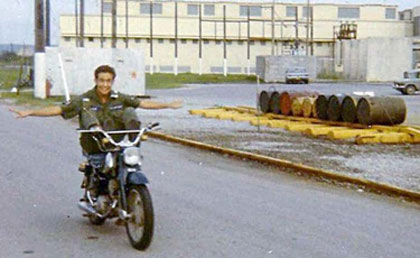 US Soldiers Bathed In Drums That Once Held Agent Orange
US Soldiers Bathed In Drums That Once Held Agent Orange
US troops in Vietnam experienced exposure to Agent Orange in several ways. The Air Force dropped gallons of Agent Orange via airplanes and trucks all over the countryside; they also spread the chemical on the outskirts of military bases. When one of the big 55-gallon drums was empty, it might have been reused as a shower or even as a barbecue pit. The drums also came in handy for storing food and other supplies.
But no matter how much you try to clean a receptacle, residual toxins are hard to fully erase, particularly if they’ve leached into other materials. The traces may have seemed imperceptible at the time, but the leftover poison resin did eventually leave its mark.
• Photo: US Army Operations in Vietnam R.W. Trewyn, Ph.D. / Wikimedia Commons / Public Domain
 Vietnam Veterans Began Experiencing Health Problems Soon After Returning To The US
Vietnam Veterans Began Experiencing Health Problems Soon After Returning To The US
US military veterans questioned the role Agent Orange played in their later health problems. One vet, Clifford Anderson, reported he received a colitis diagnosis during the 1980s, years after he left Vietnam. Anderson eventually had to have his colon removed – according to his doctor, it was “battleship gray” when they removed it. Anderson also suffered “poor circulation, bleeding ulcers on his ankles, blood clots, eye disease, and now a rare cancer that leaves small tumors on the inside of his intestines,” all of which he attributed to Agent Orange.
Anderson is not alone. A former Vietnam War medic was exposed to Agent Orange in 1969; an injury to his knee in 1978 apparently triggered the release of latent toxins in his body. Soon after he tore his meniscus, he started showing symptoms of peripheral neuropathy. But since this was not listed as one of the diseases attributed to Agent Orange at the time, he didn’t meet the Department of Veterans Affairs eligibility requirements for aid.
• Photo: USAF / Wikimedia Commons / Public Domain
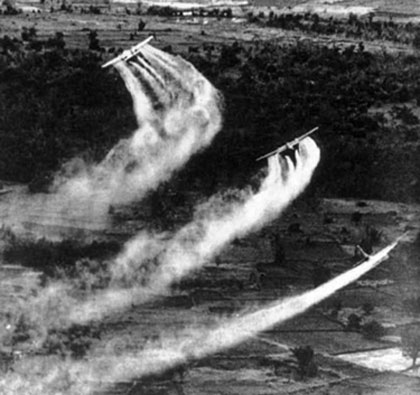 The Dioxins In Agent Orange Caused Short- And Long-Term Side Effects
The Dioxins In Agent Orange Caused Short- And Long-Term Side Effects
Immediate exposure to the toxic chemicals in Agent Orange caused minor health issues, including changes to skin color, liver problems, and acne-like lesions called chloracne. When herbicides were sprayed, soldiers emerged from the mist covered in chemicals. Within days, they might suffer gastrointestinal problems.
Longer term, dioxins have been linked to several kinds of cancer, heart disease, diabetes, and Parkinson’s, among other nerve disorders.
• Photo: Kris Roberts / Wikimedia Commons / Public Domain
 The Government Initially Denied Agent Orange Caused Health Problems
The Government Initially Denied Agent Orange Caused Health Problems
In 1974, the Department of Defense and the National Academy of Sciences (NAS) issued a report on the effects of herbicides used in South Vietnam. They concluded there was: … no clear evidence of direct damage to human health from herbicides, “no conclusive evidence” linking the defoliants with human birth defects, and no proof of permanent soil damage. The committee determined soils were capable of sustaining growth as soon as six weeks after spraying and that a year after spraying the effects on plant growth were “undetectable.”
The vice president of the NAS, Dr. George Kistiakowsky, criticized the report, telling the media it “seriously underestimated the damage and is too casual about the possible ill effects on humans.”
It wasn’t until the 1990s that the Department of Veterans Affairs began compensating veterans for health conditions attributed to Agent Orange exposure.
• Photo: USAF / Wikimedia Commons / Public Domain
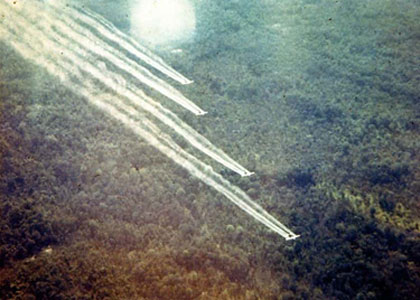 Millions Of People Were – And Continue To Be – Exposed To Agent Orange
Millions Of People Were – And Continue To Be – Exposed To Agent Orange
The exact number of people exposed to Agent Orange is unknown. Between the military service members – American, British, Australian, and others from around the world – and Southeast Asian civilians from Vietnam, Laos, and Cambodia, millions of people were either directly sprayed with the chemical or came into contact with it indirectly.
Between 1961 and 1975, herbicide use was at its highest, affecting an estimated 3 million service members or more. It’s estimated that between 2 million and 5 million Vietnamese experienced exposure to Agent Orange during the war.
Not only were they exposed to the chemical spray directly, but the toxins in Agent Orange built up in the foliage, soil, and water all over the region, and subsequently in the fatty tissues of animals (and their offspring), affecting the food supply. Exposure continued long after the spraying stopped – and continues to be a problem.
• Photo: Emilio Labrador / Wikimedia Commons / CC BY 2.0
 Many Children Of Agent Orange Victims Developed Birth Defects
Many Children Of Agent Orange Victims Developed Birth Defects
Researchers found Vietnam veterans exposed to Agent Orange were much more likely to have children with birth defects. ProPublica reported “the odds of having a child born with birth defects were more than a third higher for veterans exposed to Agent Orange than for those who weren’t.”
Matthew Penner is the son of Vietnam veteran William Penner. When he was young, his father used to joke that the “thick yellow crust that crept across his young son Matthew’s scalp” was Agent Orange, but now that Matthew’s health continues to suffer, it’s no longer a laughing matter. Other veterans, like Mike Blackledge, have seen their children suffer from inflammatory bowel disease and neuropathy.
In addition, conditions like spina bifida – where the spine does not close properly during pregnancy – are now acknowledged results of Agent Orange exposure. As children of Vietnam veterans grew up, they manifested additional health problems including arthritis, fibromyalgia, and heart disease.
• Photo: Alex Duclos / Wikimedia Commons / CC-BY-SA-3.0
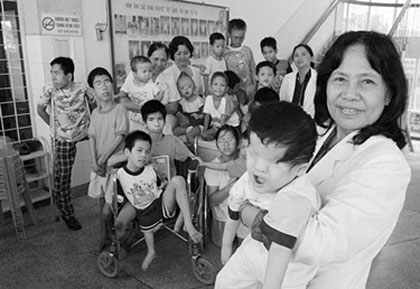 Vietnam Wasn’t The Only Place Agent Orange Was Used
Vietnam Wasn’t The Only Place Agent Orange Was Used
The Vietnam War didn’t just take place in Vietnam, and neither did the use of Agent Orange. Herbicidal warfare was practiced in Laos and Cambodia – Vietnam’s immediate neighbors – as well as in the DMZ on the Korean peninsula. Before being taken to Johnston Atoll, Agent Orange materials were stored on Okinawa in the Pacific.
Reparations for Vietnamese, Laotian, and Cambodian families have been more difficult in the aftermath of Agent Orange. The Vietnamese government remains obtuse in its own culpability – in part because the country reportedly wanted to sabotage its much-needed agricultural exports – but has pushed for the US government and companies that produced the deadly herbicide to compensate victims.
It took decades of legal struggles for the US to acknowledge the effects Agent Orange had on its own service members, and the government continues to refuse funding to aid Vietnamese victims. Vietnamese citizens filed a class action suit against the United States in 2004 for damages, but the case was dismissed in 2005.
• Photo: USAF / Wikimedia Commons / Public Domain
 Southeast Asian Countries Are Still Trying To Detoxify The Land
Southeast Asian Countries Are Still Trying To Detoxify The Land
Years after perpetuating widespread damage, the US government took some steps to clear “hot spots” around former military bases and airports throughout Southeast Asia where tests revealed prevalent remnants of herbicidal toxins. Da Nang Airport in Vietnam, for example, was finally declared “dioxin free” in 2017.
Other parts of Southeast Asia continue to struggle. The US military blasted regions of Vietnam with millions of gallons of Agent Orange that eventually made its way into the ecosystem.
Waterways, plants, fish, and other animals absorbed dioxins that remain in the soil – and in the food chain. Crops continue to be tainted, and health problems still plague the population.
Even two and three generations removed from the Vietnam War, children in Vietnam continue to develop health problems, sometimes with extreme or complicated symptoms such as twisted limbs and skin problems.
See what is ranked #1
12 Times In History When Things Escalated Quickly
• Photo: Brian K. Grigsby, SPC5, Photographer / Wikimedia Commons / Public Domain
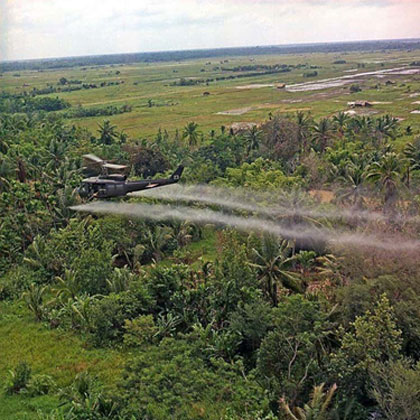 The Grandchildren Of Vietnam Veterans Exposed To Agent Orange Still Manifest Birth Defects
The Grandchildren Of Vietnam Veterans Exposed To Agent Orange Still Manifest Birth Defects
Heather Bowser was born in 1972, three years after her father returned from combat in Vietnam. Bowser weighed just over 3 pounds at birth and was “missing her right leg below the knee and several of her fingers. She had no big toe on her left foot, and the remaining toes were webbed.” Doctors attributed the deformities to residual Agent Orange.
In 2011, Bowser founded the Children of Vietnam Veterans Health Alliance (COVVHA), a group for other children of Vietnam veterans affected by Agent Orange, which now reports more than 4,000 members. According to Bowser, the health conditions COVVHA members suffer include “neural tube defects, shortened limbs, webbed toes, missing limbs, extra vertebrae, missing vertebrae, autoimmune disorders,” and more.
The US government’s willingness to resolve the issue has been questionable, but as grandchildren of veterans increasingly report health problems allegedly related to Agent Orange toxins, the level of awareness on a political level is increasing.
Emma Ackerson, for example, is the granddaughter of veteran Lonnie Kilpatrick, who suffered Agent Orange-related heart problems and cancer. Emma’s mother, Keri, also has heart issues, but 9-year-old Emma struggles with numerous disorders, including sleep apnea and gastrointestinal problems that result from a Chiari defect – the same defect that can cause spina bifida. Children of Vietnam veterans are eligible for aid through Veterans Affairs, but support for grandchildren remains unclear.
• Photo: Alexis Duclos / Wikimedia Commons / CC BY-SA 2.5
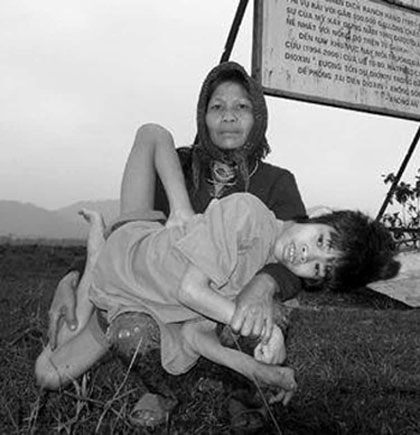 It’s Unclear How Many Cancers Are Caused By Agent Orange
It’s Unclear How Many Cancers Are Caused By Agent Orange
The number of cancers associated with Agent Orange continues to grow. The Department of Veterans Affairs lists lymphoma, myeloma, prostate cancer, respiratory cancers, and soft tissue sarcomas as cancers connected with exposure to Agent Orange. Researchers continue to explore potential links between dioxin and gastrointestinal and reproductive cancers, as well as brain tumors.
No direct link was determined, but after John McCain was diagnosed with glioblastoma in 2017, many people expressed concerns about connections between his cancer and exposure to Agent Orange.
• Photo: US Government Photograph / Wikimedia Commons / Public Domain
 After It Was Banned, The Remaining Agent Orange Was Destroyed
After It Was Banned, The Remaining Agent Orange Was Destroyed
The US claims it initiated Operations Ranch Hand and Trail Dust at the request of the South Vietnamese government. After banning the use of Agent Orange in 1971, the US sent what was left of the chemical to Johnston Atoll, a small island in the Pacific Ocean. In 1978, the last of the Agent Orange was destroyed.
Previously the site of nuclear tests, the Johnston Atoll was also home to other chemical weapons, including mustard and nerve gas. Efforts to restore the Johnston Atoll’s environment have been set back repeatedly, but the US Fish and Wildlife Service now oversees the island and is reportedly making an effort to detoxify the area
• Photo: USAF / Wikimedia Commons / Public Domain
 The Agent Orange Act Of 1991 Finally Provided Support For Victims Of The Poison
The Agent Orange Act Of 1991 Finally Provided Support For Victims Of The Poison
In 1991, the Agent Orange Act provided the first legislative acknowledgment of the adverse effects of herbicide exposure during the Vietnam War. The act states:
[The act] presumes the following diseases to be service-connected and resulting from exposure to dioxins and other herbicide agents during service in Vietnam during the Vietnam era unless there is affirmative evidence to the contrary: (1) non-Hodgkins lymphoma, each soft-tissue sarcoma (with certain exceptions), and chloracne or other consistent acneform diseases becoming manifest to a degree of disability of 10 percent or more; and (2) those additional diseases that the Secretary determines warrant such a presumption by reason of having a positive association with a herbicide agent, if they become manifest within the appropriate period.
After the act passed, veterans with these diseases became eligible for medical treatment and financial compensation. As more diseases were attributed to Agent Orange, more and more Vietnam veterans began to seek assistance from the government.
Soldiers who served on ships off the coast of Vietnam or worked on machines that carried trace amounts of Agent Orange struggled to meet eligibility requirements and had to continue fighting for aid. In 2015, the Department of Veterans Affairs expanded coverage and allocated $24 billion in compensation for veterans who served during the Vietnam era.
ranker.com




















